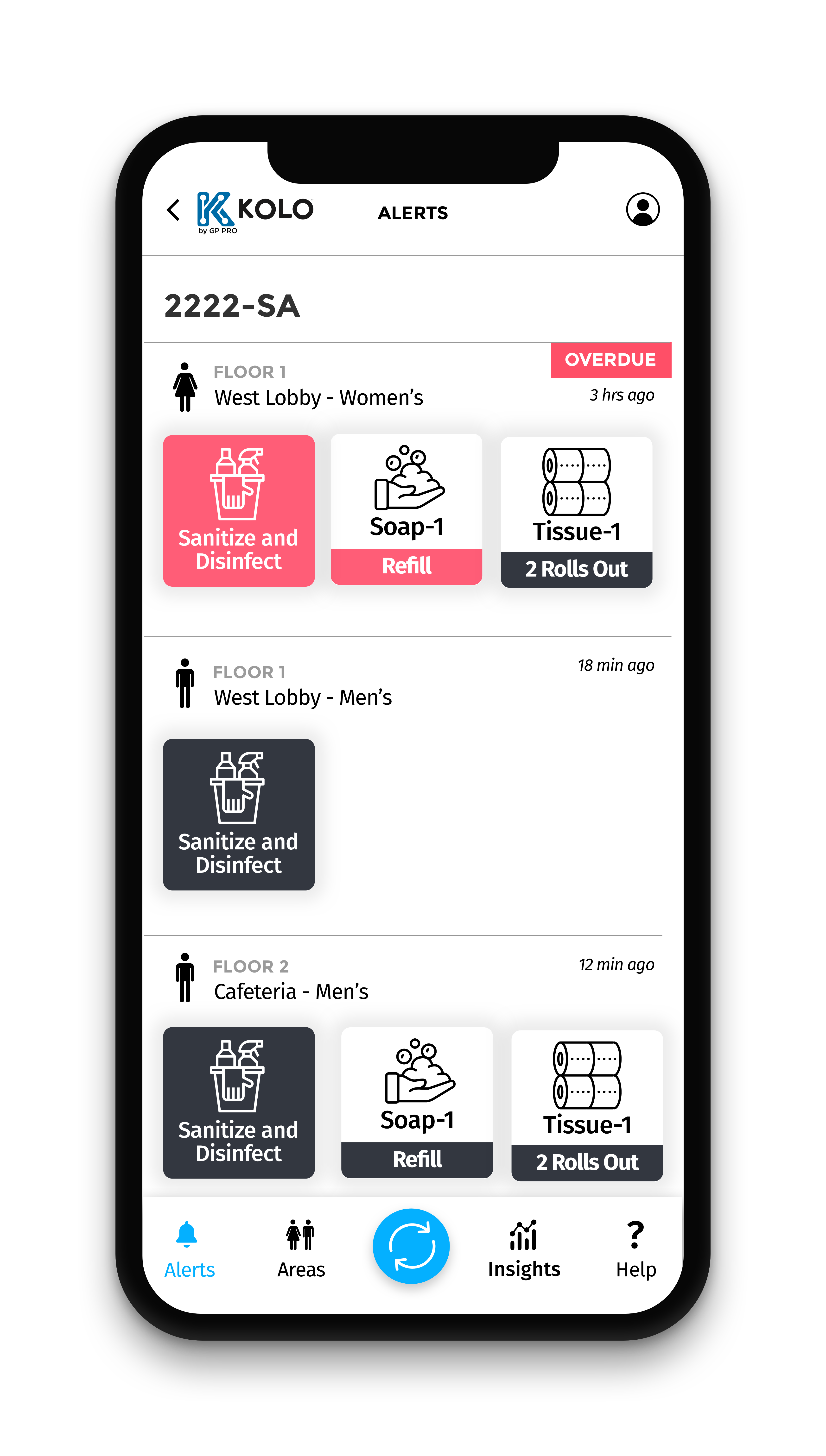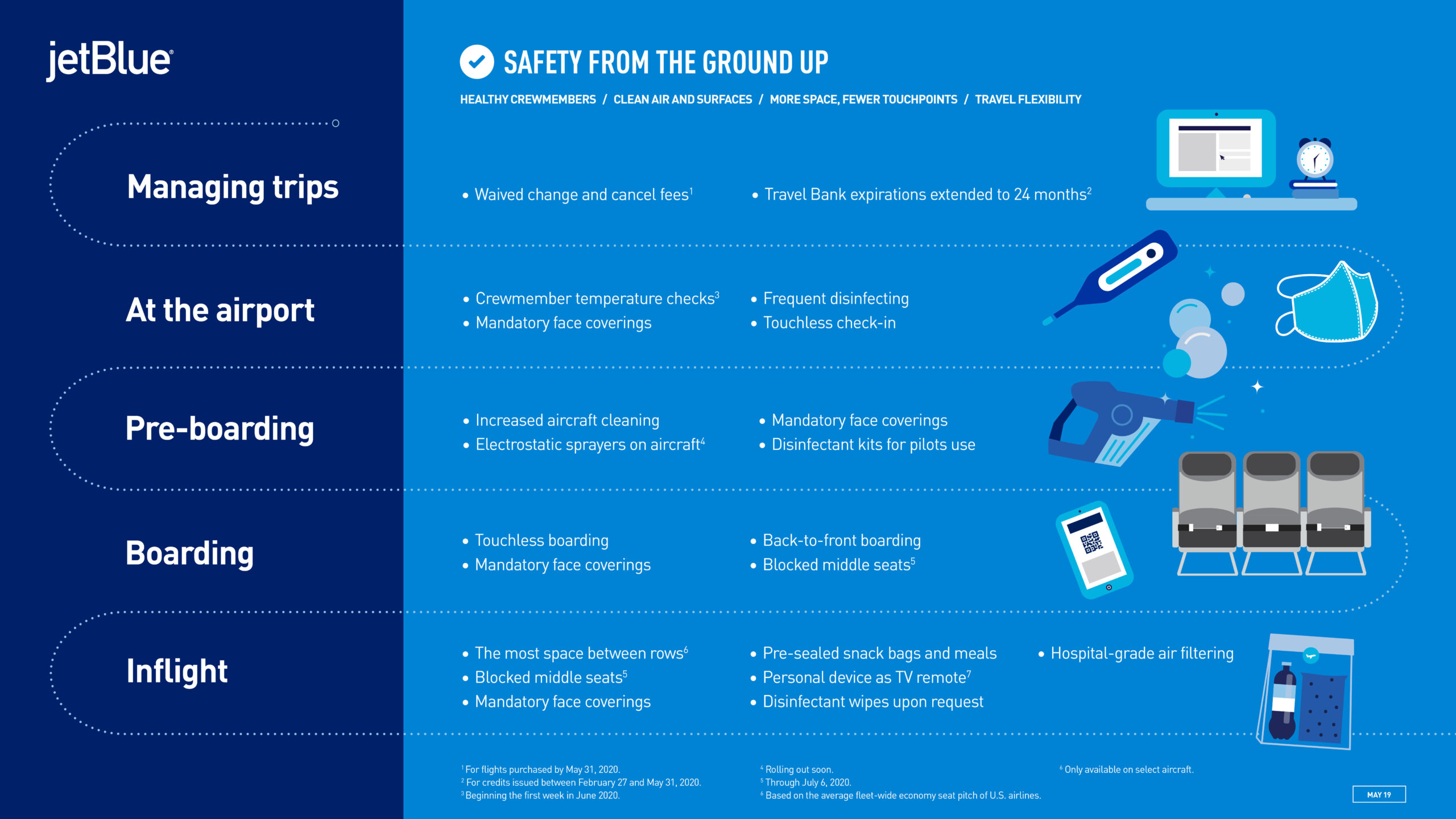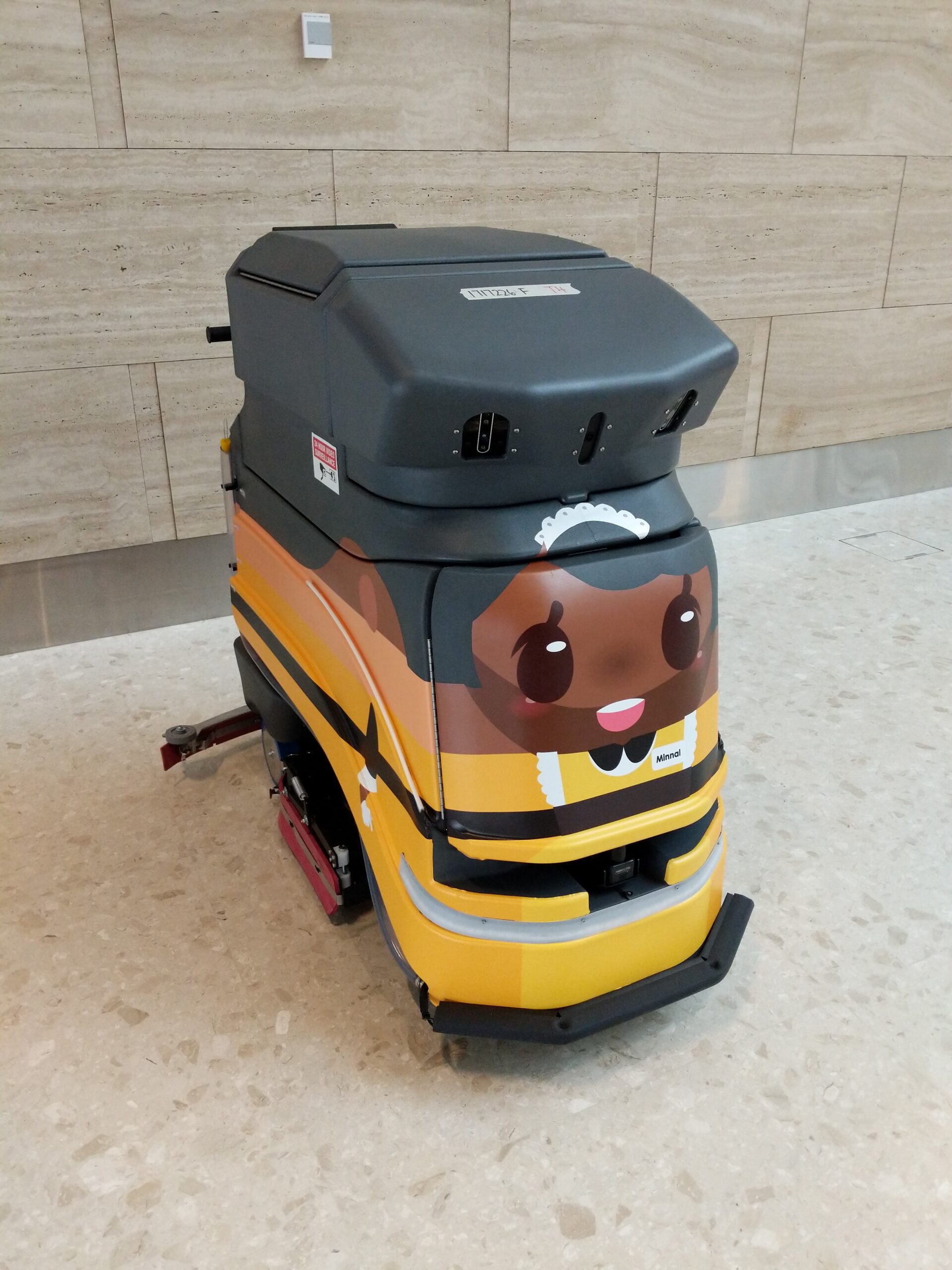In this new regular column, we report on the changing travel and aviation landscape as it takes shape in response to the COVID-19 crisis. We bring you details of how airports, airlines, travel retailers, F&B concessionaires and other service providers are adapting their processes and practices to consumer concerns about health and safety in this new world.
27 May
USA
Hartsfield-Jackson Atlanta International Airport is to become the first commercial user of a new app specifically designed to help facilities manage, monitor and measure heightened cleaning, sanitising and disinfecting practices.
From July the airport will be deploying the KOLO Hygiene app, created by Georgia-Pacific Professional (GP PRO), which uses a hygiene tracking technology that ensures custodians know which hygiene-specific tasks need to be completed. It also sends alerts to management confirming when tasks have been executed.
The technology will also provide a hygiene score to inform management if the airport has achieved its overall hygiene goals.
The airport also said it is in the process of installing approximately 250 additional ‘smart’ hand sanitisers throughout common areas, including gates, baggage claim areas, and the airport’s train tunnel. These sanitisers are wirelessly connected to an app that allows custodians to monitor usage levels and refill as necessary, so that a traveller is never met with an empty dispenser.

International

Airports Council International (ACI) World today published its comprehensive guidance plan for airports as they prepare to restart operations.
As reported, ACI World estimates that airports will suffer a COVID-19-inflicted year-on-year reduction of more than 4.6 billion passengers and a decline in revenue of more than US$97 billion in 2020.
The publication issued today, Aviation Operations during COVID-19 – Business Restart and Recovery, provides guidance for both the initial phases of the business restart, as well as the longer-term recovery process.
ACI World expects the return to business for the aviation industry to come in phases:
*initial restart with a limited number of passengers
*recovery with a slow increase in passenger volume
*gradual scale-up in capacity, and then
*return to more traditional passenger volumes.
Any new measures that are introduced at airports will need to evolve through these phases until, eventually, the industry will arrive at “the new normal” in terms of the end-to-end passenger journey, said ACI.
“COVID-19 has been an unprecedented global challenge, particularly to the aviation industry, with the quick spread of the virus resulting in governments rapidly restricting travel and closing borders to limit the spread,” said ACI World Director General Angela Gittens. “This has had a drastic and detrimental effect on airports worldwide and a variety of new measures could become a necessity at airports as the industry restarts.
“For airports, the focus is to protect the health and welfare of travellers, staff, and the public, to minimise the opportunities for dissemination of disease while maintaining efficient operations.”
ACI said it has identified “key principles to guide the implementation of practical, efficient, and workable health-related and operational measures”. It noted that measures should be “supported by medical evidence, should be risk-based and outcome-driven and that blanket on-airport health screening should be avoided”.
“Collaboration, cooperation and consistency are key, first for the industry to successfully restart, and then for sustaining a balanced recovery,” Gittens added. “ACI is a member of the ICAO Council Aviation Recovery Taskforce and we will continue to work with our global partners to advocate for the harmonisation of measures, processes and procedures that are introduced as a result of COVID-19.
“Governments and industry regulators will need to ensure that any new processes that they require airports to introduce are adapted to changing data and medical evidence and ensure that they remain aligned with those deployed through other modes of transport and the wider society.
“To help airports navigate this changing landscape, this publication is intended to be a living document with chapters added or amended as additional information becomes available and each chapter can be read as a standalone document.”
International
The Duty Free World Council (DFWC) will host a webinar titled ‘Planning to Restart’, in partnership with Airports Council International (ACI) and regional industry associations, on 3 June.
The aim of the event is to present updates on the current state of the duty free & travel retail industry, review the latest air traffic data courtesy of ACI World and highlight the measures taken by the Council and regional associations to help the business restart.
Full story here.
21 May
US
JetBlue announced that it will be blocking all middle seats as part of its new ‘Safety from the Ground Up’ programme. According to the airline, the seat-distancing measure will remain in place until at least 6 July.
JetBlue’s Safety from the Ground Up programme focuses on several key pillars: healthy crew members; clean air and surfaces; more space, fewer touchpoints; and travel flexibility. The airline is also rolling out temperature monitoring and electrostatic aircraft fogging from June.

As part of the ‘more space, fewer touchpoints’ pillar, social distancing will be strictly implemented throughout JetBlue’s operations. All middle seats will be blocked on Airbus aircraft; while all aisle seats will be blocked on the airline’s smaller Embraer 190 aircraft. Customers travelling together will be allowed to sit with each other in middle and aisle seats.
JetBlue President and Chief Operating Officer Joanna Geraghty commented, “As communities start to reopen and with summer travel kicking off this weekend, more people are beginning to fly, and we want them to feel safe on JetBlue. Our program layers together a series of protections throughout the entire travel journey, which work together to help keep everyone safe and well.”
Geraghty added: “We’re known for generous legroom and space, and now more than ever, those choosing to travel want as much space as possible. We are pleased to extend our efforts to keep seats free and help everyone onboard spread out.”
Other safety measures include stringent temperature checks for all crew members, the use of face coverings for both passengers and crew, touchless check-in and boarding, and adjusted inflight services.
UK

London Heathrow Airport has started thermal screening trials in the immigration hall of Terminal 2.
The new measure was launched today and is part of the airport’s wider COVID-19 prevention programme.
The technology uses a camera detection system that can monitor the temperatures of multiple people moving across the airport. If successful, the thermal screening technology will be rolled out across all of the London airport’s terminals.
Heathrow said that observations from the trial will be shared with the UK government, as the company continues to urge global authorities to agree to a common international standard for airport health screenings.
Heathrow Chief Executive Officer John Holland-Kaye commented, “To unlock the full benefits of aviation for the economy, a common international standard for health screening must be agreed by the global authorities. The technology we are trialling now could be a part of this solution.”
20 May
Europe
A highly anticipated Aviation Health Safety Protocol proposed by two influential European agencies has been welcomed by airport and travel retail representatives, but looks set to curtail inflight retail sales as contact between crew and travellers is minimised on aircraft.
US
McCarran International Airport in Las Vegas has installed new vending machines selling personal protective equipment (PPE) for travellers.
There are three vending machines – two on either side of the Terminal 1 ticketing area and another near the Terminal 3 TSA checkpoint – all selling hand sanitiser, alcohol wipes, disposable gloves and a selection of masks.
A new option to help protect yourself and others while traveling. LAS was the first airport to install PPE vending machines from which travelers can purchase items like gloves and hand sanitizer. These machines can be found in T1 ticketing and near the T3 TSA checkpoint. pic.twitter.com/1suaVel412
— McCarran Airport (@LASairport) May 14, 2020
McCarran International Airport Spokesperson Christine Crews told CNN: “The whole world is going through behavioural modification and learning new habits, so it’s not unthinkable that someone could show up at the airport and not have the new necessities that are part of travel.”
California-based Prepango is the owner and operator of the machines.

Singapore
Changi Airport Group has introduced new health and safety measures to prevent the spread of COVID-19.
The company has installed more than 1,200 motion-activated hand sanitiser dispensers across its terminals and in Jewel Changi.
It has also ramped up cleaning protocols — by using high-powered disinfectants over general cleaning products — and deployed 26 automatic sanitation robots.
Changi Airport Group is also spraying protective disinfectant coating on all touchscreen panels, immigration counters, bag-drop machines, lift buttons, handrails, and trolleys. The single application compound protects against viral substances for a period of up to six months. It has also been applied in all the main attractions in Jewel Changi including the Canopy Park and the Discovery Slide.
The company announced that all passengers on arrival will be subject to mandatory temperature screenings; while airport staff will undergo temperature checks twice a day.
International
Airports Council International (ACI) World and the International Air Transport Association (IATA) have called on governments to ensure new measures introduced for airports and airlines in the wake of COVID-19 are consistent across the world. Any restrictions put in place should be supported by scientific evidence, they added.
ACI and IATA have jointly issued a paper laying out a pathway for restarting the aviation industry – Safely Restarting Aviation – ACI and IATA Joint Approach. They said that airlines and airports have cooperated to build a roadmap for resuming operations “which reassures the travelling public that health and safety remain the priorities”. The roadmap mirrors proposals put forward in a statement by IATA last night (see below).
The joint approach proposes a layered approach of measures across the entire passenger journey to minimise the risk of transmission of COVID-19 at airports and onboard aircraft, and to prevent aviation becoming a meaningful source of international re-infection. Such measures should be globally consistent and subject to continued review, improvement, and removal when no longer required, to ensure an even recovery.
ACI and IATA are both central members the COVID-19 Aviation Recovery Task Force (CART) being led by the Council of the International Civil Aviation Organization (ICAO).
“Airports and airlines have come together with ICAO and the wider aviation industry to address the biggest challenge ever faced by commercial aviation in restarting a global industry while continuing to halt the spread of COVID-19,” ACI World Director General Angela Gittens said. “There is currently no single measure that could mitigate all the risks of restarting air travel but we believe a globally-consistent, outcome-based approach represents the most effective way of balancing risk mitigation with the need to unlock economies and to enable travel.”
19 May
Australia
Qantas and Jetstar will roll out a series of measures aimed at offering travellers peace of mind pre-flight and onboard with domestic travel restrictions expected to ease. The ‘Fly Well’ programme will be launched from 12 June.
Pre-flight
- Information will be sent to all customers before they fly.
- Contactless check-in (via online/app) and self-serve bag drop is encouraged, including use of Q Bag Tags.
- Hand sanitising stations at departure gates.
- Temporary changes to Qantas Lounges, including increased physical distancing, hand sanitising stations, enhanced disinfection of surfaces and adjustments to the food and drink service.
- Working with airports on other safeguards in the terminal, including regular disinfection of security screening points and installing hygiene screens at airline customer service desks, wherever practical.
Onboard
- Masks provided to all passengers on each flight – while not mandatory, they are recommended.
- Enhanced cleaning of aircraft with a disinfectant effective against coronaviruses, with a focus on high contact areas – seats, seatbelts, overhead lockers, air vents and toilets.
- Sanitising wipes given to all passengers to wipe down seat belts, trays and armrests themselves, if preferred.
- Simplified service and catering to minimise touchpoints for crew and passengers.
- Passengers asked to limit movement around cabin, once seated.
- Sequenced boarding and disembarkation to minimise crowding.

Qantas Group CEO Alan Joyce said: “We’re relying on the cooperation of passengers to help make these changes work for everyone’s benefit, and we thank them in advance for that. Given the great job Australians have done at flattening the curve, we’re confident they’ll respond positively to these temporary changes to how we fly.
“We’ll continue to work with government and monitor the rollout of these measures closely, which are designed with safety in mind and help people feel comfortable given the new norms that have emerged in response to the coronavirus crisis.”
Qantas Group Medical Director Dr Ian Hosegood said: “The data shows that actual risk of catching coronavirus on an aircraft is already extremely low. That’s due to a combination of factors, including the cabin air filtration system, the fact people don’t sit face-to-face and the high backs of aircraft seats acting as a physical barrier. As far as the virus goes, an aircraft cabin is a very different environment to other forms of public transport.
“Social distancing on an aircraft isn’t practical the way it is on the ground, and given the low transmission risk on board, we don’t believe it’s necessary in order to be safe. The extra measures we’re putting place will reduce the risk even further.”
The Fly Well programme will be reviewed after its first month of operation and shaped by customer feedback and medical advice.
18 May
Qatar
Qatar Airways has introduced several additional safety measures for both passengers and cabin crew as it begins to expand flight operations.
Cabin crew are now required to wear personal protective equipment (PPE) onboard. This includes safety goggles, gloves, masks, and the wearing of PPEs over their uniforms.
The airline is also implementing social distancing in-flight and during boarding. On flights with lighter passenger loads, it will allocate seats to minimise the occurrence of passengers sitting next to each other. It has also significantly reduced passenger and crew interactions and closed all social areas inflight. Large bottles of hand sanitiser will also be placed in the galleys.
Beginning 25 May, Qatar Airways will require passengers to wear face coverings and recommends that passengers provide their own face masks.
To reduce passenger and cabin crew contact during meal services, business class meals will be served on trays instead of in courses, with cutlery wraps used as an alternative to individual cutlery.
Business class passengers can enjoy enhanced privacy in the Qsuite, which offers sliding privacy partitions and fully closing doors. They can also opt to use the ‘Do Not Disturb’ indicator to further limit interaction with cabin crew.

As reported, the airline has implemented enhanced cleaning protocols, recommended by the International Air Transport Association (IATA) and the World Health Organisation (WHO), across its entire fleet.
This includes the stringent washing of all onboard linens, sanitising all meal service utensils at bacteria-killing temperatures and using HEPA filters that remove 99.97% of viral contaminants from re-circulated air.
The airline has also invested in disinfectant robots — which are fully autonomous and emit concentrated UV-C lights — to eliminate infectious microorganisms in Hamad International Airport.
In addition, Qatar Airways has required staff to take additional health and safety training to help them adopt the new safety measures.
The airline has revised cabin crew distribution by sending two groups — the first to work on the outbound trip and the second to on the inbound trip — on short-haul and medium-haul flights. Long-haul flight crew members, who must stay overnight in a foreign city, can only travel via Qatar Airways-approved transport and must self-isolate in their rooms.

Cabin crew are also thermally screened before any flight departure and after their arrival. If a colleague or passenger show any symptoms of infection, relevant cabin crew members will be quarantined and tested.
His Excellency Qatar Airways Group Chief Executive Mr. Akbar Al Baker commented, “At Qatar Airways, we have introduced these additional safety measures onboard our flights to ensure the continued health and wellbeing of our passengers and cabin crew, and to limit the spread of coronavirus. As an airline, we maintain the highest possible hygiene standards to ensure that we can fly people home safely during this time and provide even greater reassurance that safety is our number one priority.
“Seeing as we are still flying the world’s largest international network by operating flights to more than 30 destinations around the world and aiming to grow our network again in the coming months, these onboard safety measures will assist us in achieving our goals.”
NOTE: For earlier updates, click here












